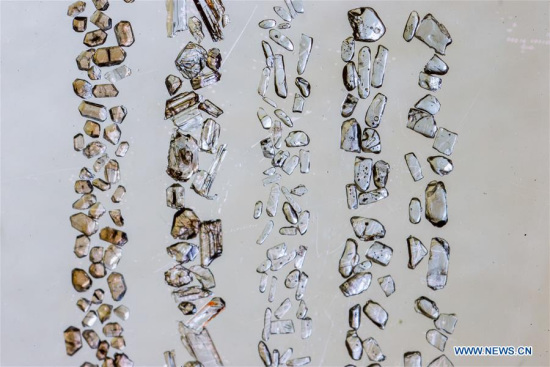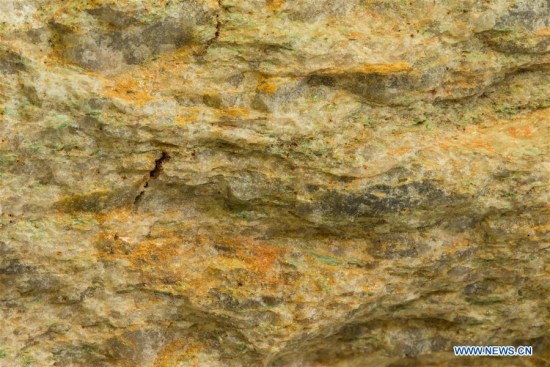
Photo provided by Australian National University (ANU) shows the zircon crystal in the research in the Earth's history. (Xinhua/ANU)

Photo provided by Australian National University (ANU) shows the sandstone rocks found in Jack Hills in Western Australia, which have been used in the research in the Earth's history. (Xinhua/ANU)
The Earth's landscape was most likely to have been barren, mountainless and mostly underwater 4.4 billion years ago, according to Australian scientists who analyzed ancient "mineral grains" from Western Australia.
In a statement released on Tuesday, scientists from the Australian National University (ANU) said they closely analyzed tiny grains of zircon found in the ancient sandstone rocks formations in the Jack Hills in Western Australia, which are believed to be the "oldest fragments of the Earth ever found."
Lead researcher, Antony Burnham from the ANU, said the mineral grains gave scientists a strong indication that pre-life Earth was mostly underwater, flat and without any vegetation.
"The history of the Earth is like a book with its first chapter ripped out with no surviving rocks from the very early period, but we've used these trace elements of zircon to build a profile of the world at that time," Burnham said.
"Our research indicates there were no mountains and continental collisions during Earth's first 700 million years or more of existence - it was a much more quiet and dull place.
"Our findings also showed that there are strong similarities with zircon from the types of rocks that predominated for the following 1.5 billion years, suggesting that it took the Earth a long time to evolve into the planet that we know today."
Burnham said his team were able to analyze the grains "to decipher the link between zircon composition and magma type" and they were able to create an accurate picture of what the Earth might have looked like.
According to the ANU, life was not recorded on Earth until around 3.8 billion years ago, meaning the mineral fragments easily predate life on Earth.
"The samples of zircon from Jack Hills have been collected over the course of several decades by many people, while chemical analyses carried out by an ANU research group 20 years ago have proved invaluable," Burnham said.


















































